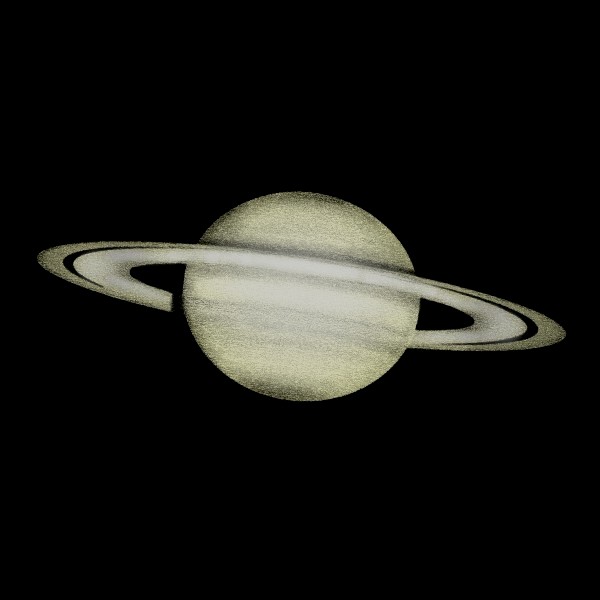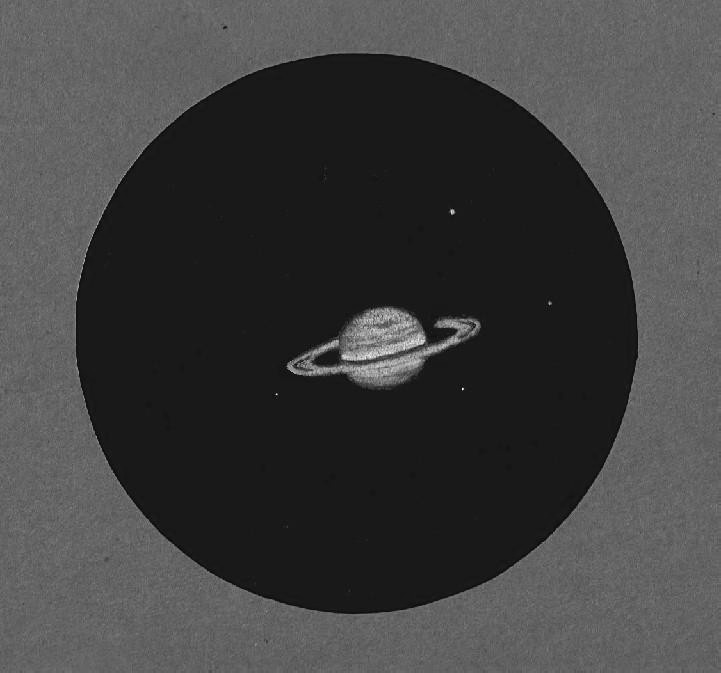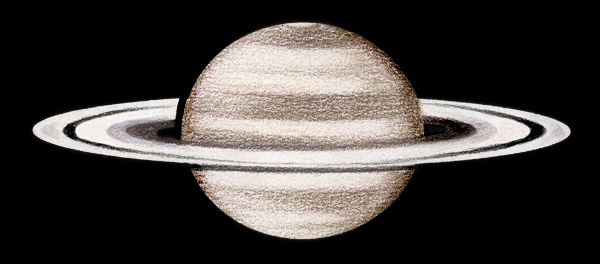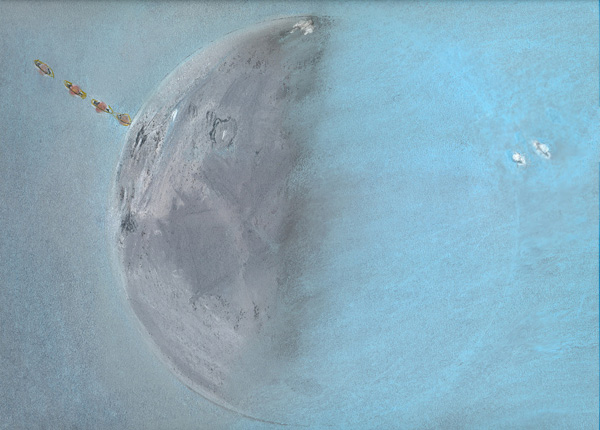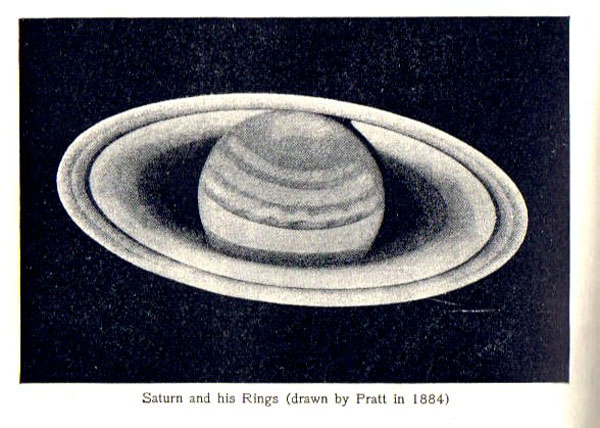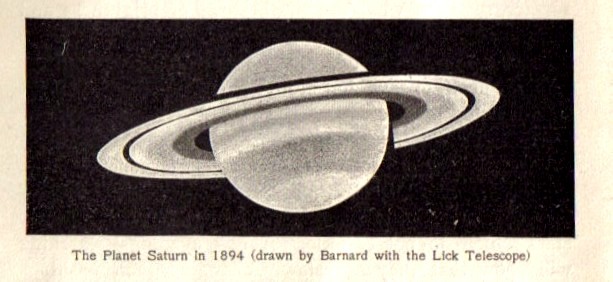Saturn
Sketch and Details by Paul Abel
Hi there,
My name is Paul Abel and I’m a visual amateur astronomer here in Leicester UK. I produce all my observations by sketching and a recent Jupiter sketch of mine will be appearing in the Stargazerslounge.com calendar for 2009. I was wondering if you’d like some of my sketches for your website? It’s really good to see a website in astronomy devoted to sketching; we have plenty devoted to CCD!
I have enclosed a Saturn sketch as an example. Sadly, it is not one of my best, but it is the only one I can lay my hands on at the moment!!!
Regards,
-Paul.
Webmaster’s note: Thanks Paul, this sketch is lovely, and by all means, we would very much enjoy featuring your sketches!
-Rich Handy






